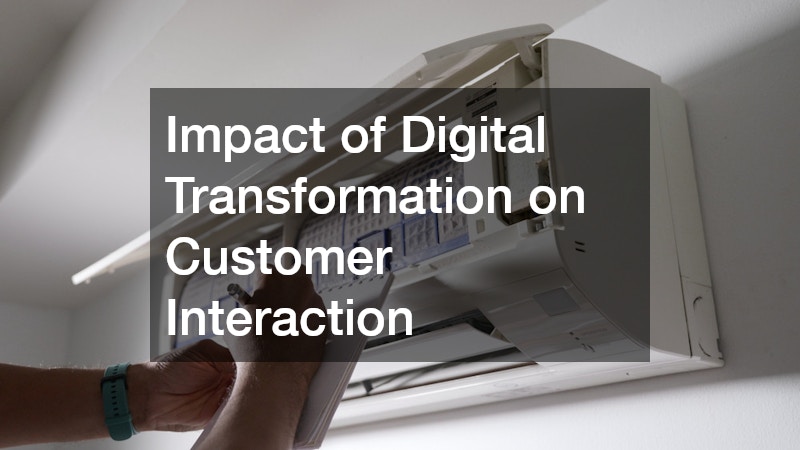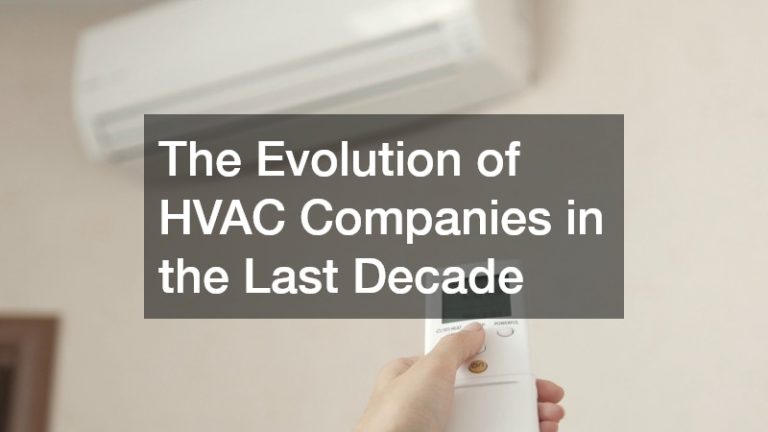The HVAC industry has undergone a significant transformation over the past decade, influenced by technological advancements, shifting markets, and a growing focus on environmental issues. New technologies have revolutionized HVAC systems, enhancing efficiency, connectivity, and user convenience. At the same time, sustainability has emerged as a crucial driver, prompting HVAC companies to innovate towards more eco-friendly solutions.
Technological Advancements That Have Impacted HVAC Companies the Most
Smart Technologies and IoT Integration
The introduction of smart HVAC systems and the integration of Internet of Things (IoT) technologies have revolutionized the industry. Smart technologies allow for greater energy efficiency by optimizing performance based on real-time data and user habits.
Consumers benefit from enhanced convenience, as these systems can often be controlled remotely via smartphone apps.
IoT integration has facilitated the development of HVAC systems that learn user preferences and automatically adjust settings to optimize comfort and energy consumption. These advancements have led to significant energy savings and reduced operational costs for both residential and commercial users. HVAC companies are continually innovating to enhance system connectivity and intelligent automation.
Furthermore, predictive maintenance enabled by IoT technologies helps prevent system failures and reduces downtime. Sensors and smart algorithms can detect potential issues before they escalate, providing a proactive approach to maintenance. This shift not only enhances customer satisfaction but also extends the lifespan of HVAC equipment.
Advancements in Energy-Efficient Solutions
Energy efficiency has become a primary focus for HVAC companies, driven by innovations in supporting technologies. Variable speed technology is one such innovation, allowing HVAC systems to operate at varying speeds instead of full power, resulting in substantial energy savings. Additionally, the transition to eco-friendly refrigerants has been a significant step towards reducing environmental impact.
Improved insulation materials and advanced thermal management techniques also contribute to energy-efficient HVAC solutions. The adoption of these technologies helps reduce greenhouse gas emissions and meet more stringent environmental regulations. As energy costs continue to rise, energy efficiency remains a key selling point for consumers and businesses alike.
The incorporation of renewable energy sources, such as solar and geothermal, has also gained traction in the HVAC industry. By harnessing these sustainable resources, HVAC systems can further decrease their reliance on conventional energy, aligning with global sustainability goals. The growing demand for energy-efficient solutions has spurred ongoing research and innovation, prompting HVAC companies to explore more sustainable technologies.
How Sustainability Trends Have Influenced the HVAC Industry
Adoption of Green Technology
The emphasis on green technology has played a pivotal role in shaping the HVAC industry over the past decade. HVAC companies are increasingly integrating renewable energy sources, such as solar panels, to power HVAC systems more sustainably. This transition not only reduces carbon footprints but also aligns with consumer preferences for greener solutions.
Green building initiatives have also driven the adoption of eco-friendly HVAC systems that meet stringent energy efficiency standards. Such systems are designed to minimize energy consumption and maximize the utilization of renewable resources. Consequently, the HVAC sector has seen an uptick in demand for solutions that support sustainable building practices.
Regulatory Changes and Compliance
New regulations and standards have significantly impacted the HVAC industry, necessitating compliance to enhance environmental sustainability. Governments worldwide are implementing stricter regulations regarding energy efficiency and emissions reductions, challenging HVAC companies to innovate rapidly. In response, companies have invested in research and development to meet and exceed these evolving standards.
The phase-out of hydrofluorocarbon (HFC) refrigerants is one such regulatory change that has spurred industry-wide transformation. HVAC companies are transitioning to low-global-warming-potential (GWP) refrigerants to comply with international agreements and reduce environmental impact. These changes have led to increased collaboration between industry stakeholders to develop and scale new technologies.
How Customer Expectations and Service Models Have Evolved
Shift Towards Customer-Centric Models
Customer expectations have evolved, prompting HVAC companies to adopt more personalized service models. Consumers today demand higher levels of efficiency, convenience, and responsiveness from service providers. This shift has led to an increased emphasis on customer-centric strategies that prioritize individual needs.
Companies are leveraging advanced data analytics to tailor their services and anticipate customer preferences. By analyzing behavioral data, HVAC providers can offer customized solutions that enhance customer satisfaction and foster loyalty. This proactive approach also allows for the identification of potential system issues before they impact the user.
Impact of Digital Transformation on Customer Interaction
Digital transformation has revolutionized how HVAC companies interact with their customers, enhancing engagement and streamlining service delivery. The adoption of digital platforms and mobile apps allows consumers to contact service providers with ease, fostering accessibility and communication. These platforms offer features such as service scheduling, system monitoring, and remote diagnostics.
The integration of digital tools has enabled HVAC companies to provide more efficient and responsive customer support. Real-time communication capabilities allow for quicker issue resolution, reducing downtime and enhancing user satisfaction. Customers now expect seamless digital experiences as a standard service offering.
Over the last decade, the HVAC industry has experienced significant changes driven by technological advancements, sustainability trends, and evolving customer service models. From the integration of smart technologies and green solutions to adapting service delivery for enhanced customer interaction, HVAC companies continue to innovate and grow. As the industry evolves, these trends will shape the future trajectory of HVAC solutions, with a focus on sustainability and customer satisfaction.

